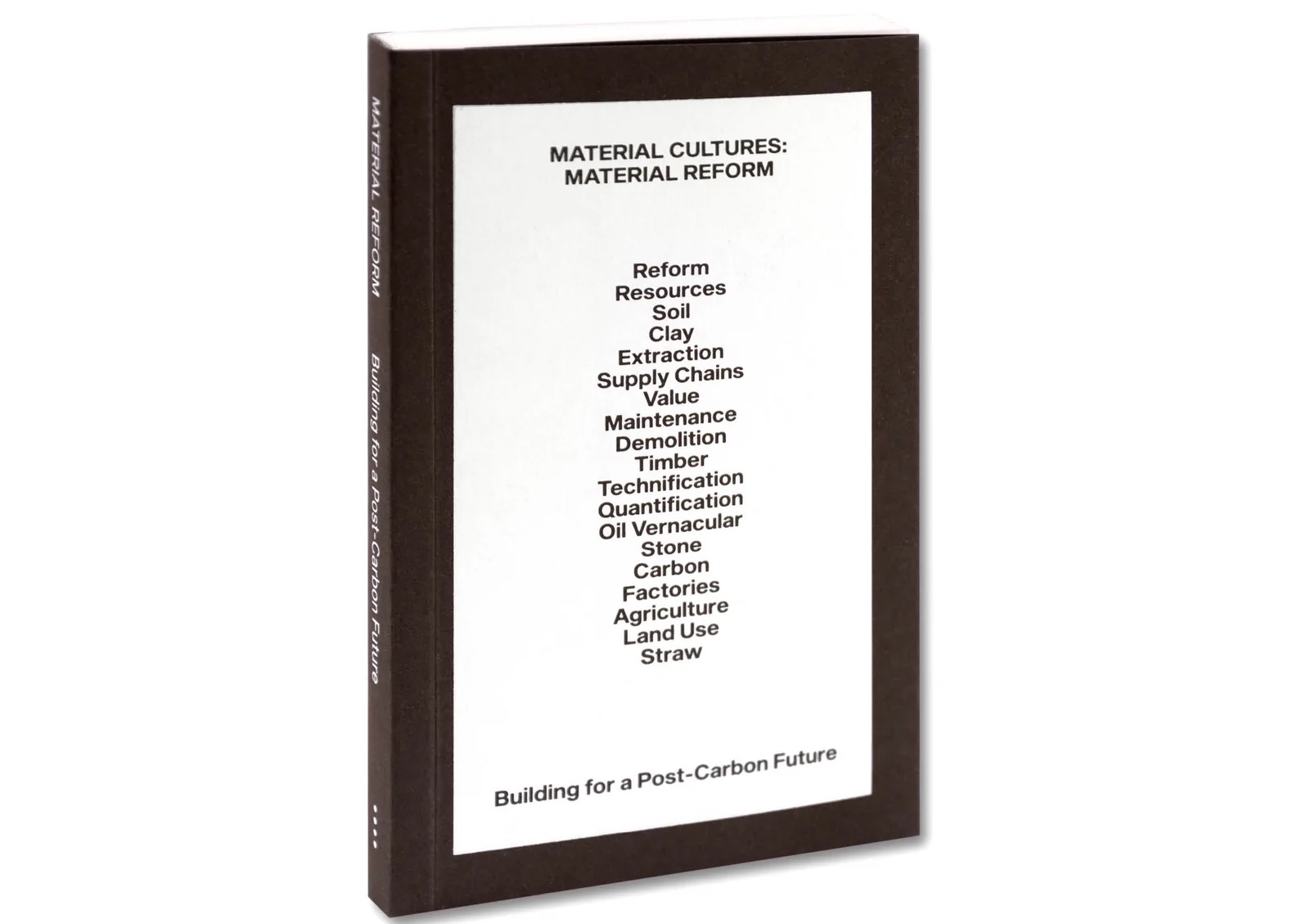Post
BOOK REVIEW | Material Reform
16 Jan 2023
Material Reform: Building for a Post-Carbon Future
Reviewed By Vanessa Norwood
Available from Mack Publishing
Material Reform is a small book that makes a powerful case for rethinking our connection to our landscape and built environment.
The first book by design and research practice Material Cultures, it has been written in collaboration with Amica Dall and features photographs by Jess Gough. With an impressively broad remit, the book makes the compelling argument that low carbon local materials are a viable alternative to the globally sourced, petrochemical-derivative materials that dominate our built environment.
Set out in a series of concise chapters, each examining a particular aspect of the cultures, systems, and infrastructures of making architecture, Material Reform shows that repairing current destructive practices is both an urgent and achievable aim to ensure a move towards a more equitable post-carbon future. The authors are honest about the resistance shown to the social, material and economic innovation needed to achieve this goal, and the book offers an unflinching appraisal of the task ahead.
Material Reform stresses the need for designers to fully understand inherent social, cultural and health impacts when they specify materials. The book documents the challenges of working with non-standard and bio-based materials that lay outside most of the infrastructures that support and regulate construction in an industry that is highly litigious and risk-averse. Subjects range from extraction to demolition; the importance of good soil health is referenced as well as a chapter devoted to the ‘oil vernacular’ built on a damaging global reliance on cheap fuel and labour.
There is a frank approach to materials use, with bad practices called out, such as the non-sensical way that bricks are used as a decorative layer to clad concrete and steel facades. Timber, seen as a sustainable saviour, is discussed honestly; from the reliance of glues, preservatives and acetylizing chemicals - by-products of the petrochemical industry - in Cross Laminated Timber (CLT) to the problems of planting monoculture forests and our reliance on imported timber.
The book’s glossary forms an explainer for terms used in the construction industry but also importantly unpicks some of the language that has historically allowed for destructive, Eurocentric terminology like ‘the Third World’, siting alternative terms such as ‘Majority World’. This shift in language is a vital component in forging a future away from the imperial economic systems that persist to a far more responsible view of materials extraction.
The authors acknowledge that while a profound change is needed in our thinking, the word ‘revolution’ can be a daunting distraction. Instead, they urge us to ‘hold a vision of a radically different world in your mind while continuing to act in the world as it is, persisting in the project of making changes that are within the scope of action.’
Material Reform is a well-researched, beautifully written book and should be pressed into the hands of every new architecture student as essential reading. It makes a clear and comprehensible case for positive change, change that maps a path to a sustainable and equitable future.
Material Cultures is a not-for-profit organisation led by Summer Islam, Paloma Gormley and George Massoud that advocates for sustainable building materials.
Vanessa Norwood is a curator and consultant
